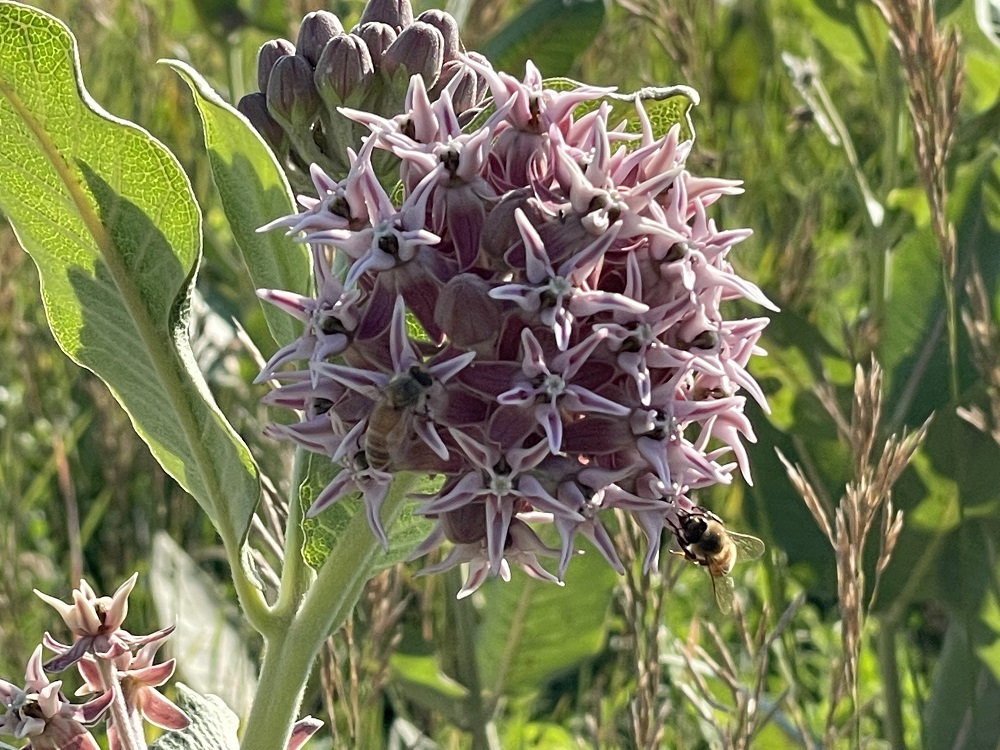Milkweed is a very familiar plant name due to its close association with Monarch Butterflies, but not everyone recognizes it when they see it! Showy or Common Milkweed is a tall plant with pale or deep pink flowers massed together at the top of the plant, large leaves and interesting seed pods later in the summer and fall. Milkweeds usually have a milky sap in the stems, providing them with their common name.
There are almost twenty types of Milkweed in Colorado, with the Showy or Common Milkweed as the most frequently seen in Colorado. It is also the type found in the grasslands near the marsh of the Willow Spring Open Space. Milkweed plants are frequently seen growing together in a patch.
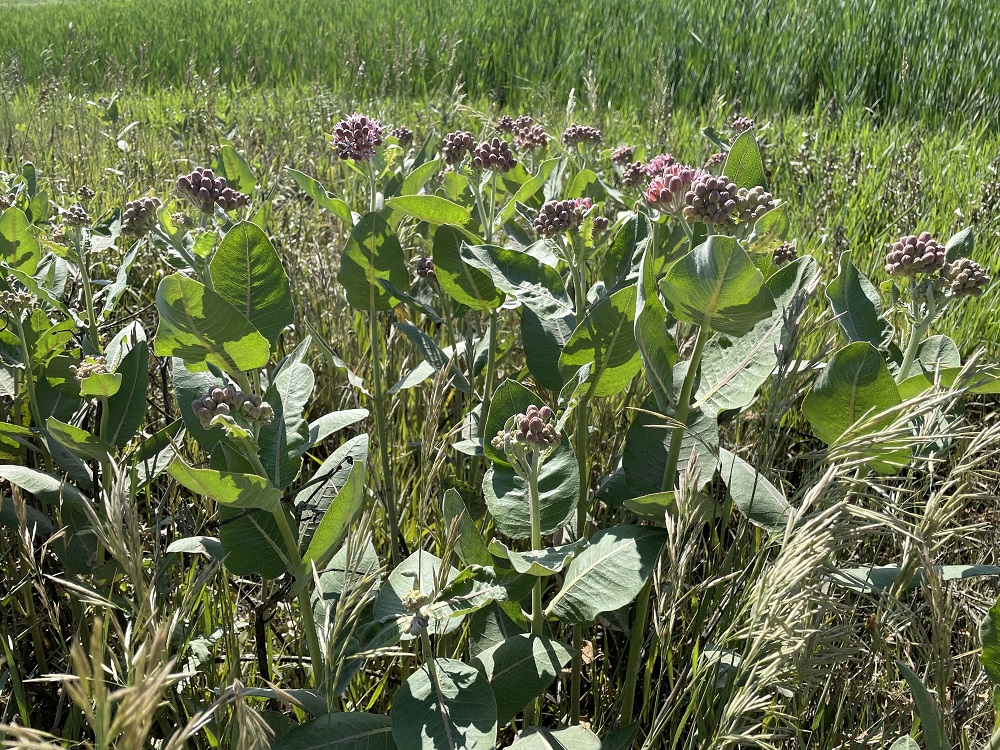
Showy Milkweed plants are about 1.3-4 feet tall with large oval leaves about 4-8 inches long and 1.5-4 inches wide. The flowers are at the top of the plant, grouped in an umbel (upside-down umbrella), showy (the plant name describes them well), with a starfish shape. There are dense whitish hairs on the stems.
Scientific name and Plant Family Information
The Scientific name for the Showy Milkweed is Asclepias speciosa. Asclepias is the Greek god of medicine; speciosa means showy. Milkweeds have a long history of being used for medicinal purposes.
They are in the plant family Apocynaceae (Dogbane), which also has dogbanes, periwinkles and the Hoya houseplant.
Plants in this family can be trees, shrubs or herbs and have a milky, latex sap, which can be poisonous. It contains cardiac glycosides which are steroid-like compounds which have been used for the treatment of mild to moderate congestive heart failure.
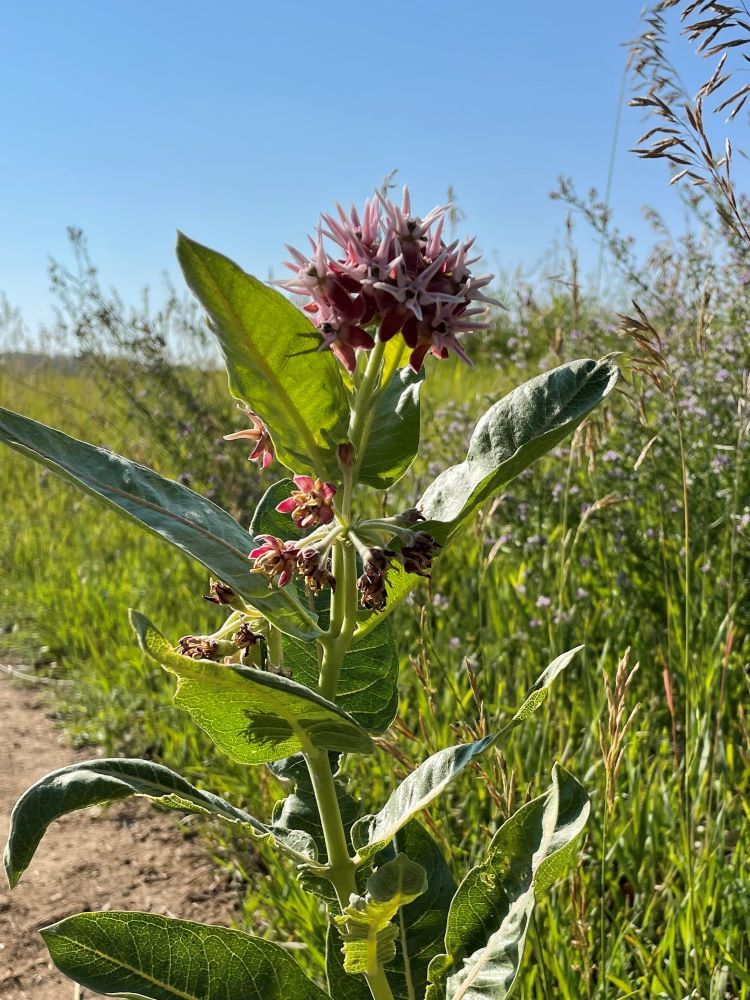
Through the Seasons
Showy Milkweeds are perennial plants that leaf out in the spring. Pink flower buds are visible in June, followed by flowers in July. The flowers require pollination by insects in order to form seeds. The seed pods form in August starting out green and then turning brown and splitting on one side.
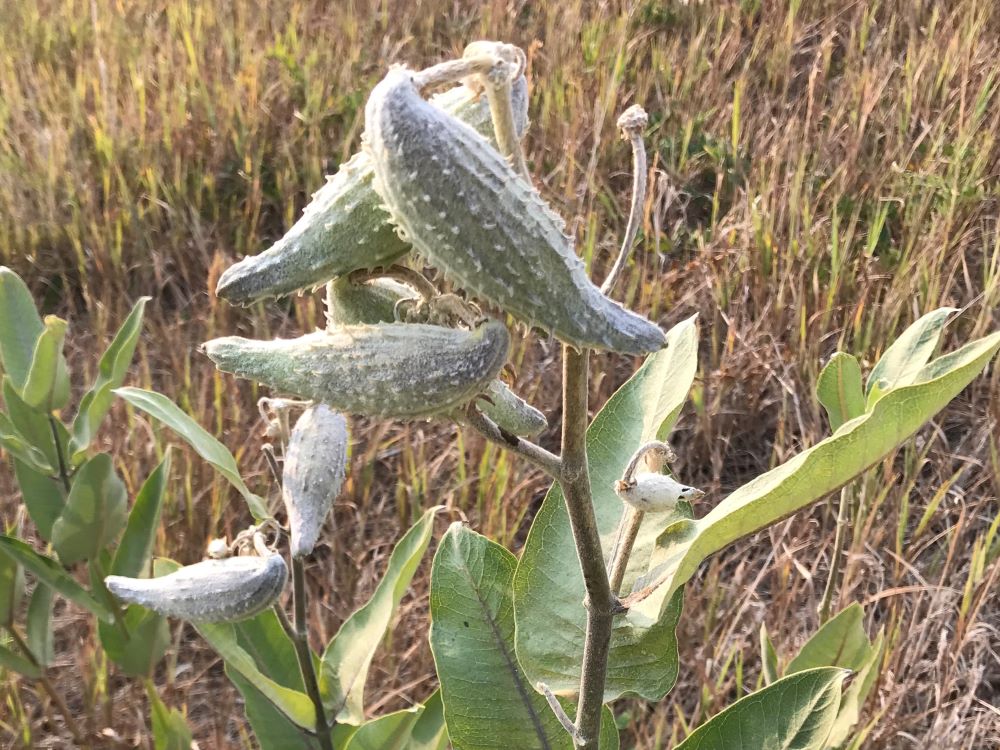
In the fall, the seed pods split on one side to release the open up to release the seeds. Each seed has a a tuft of silky hairs at one end, acting as a parachute. The leaves turn a bright yellow making the plants easy to spot from a distance in the brown grasslands.
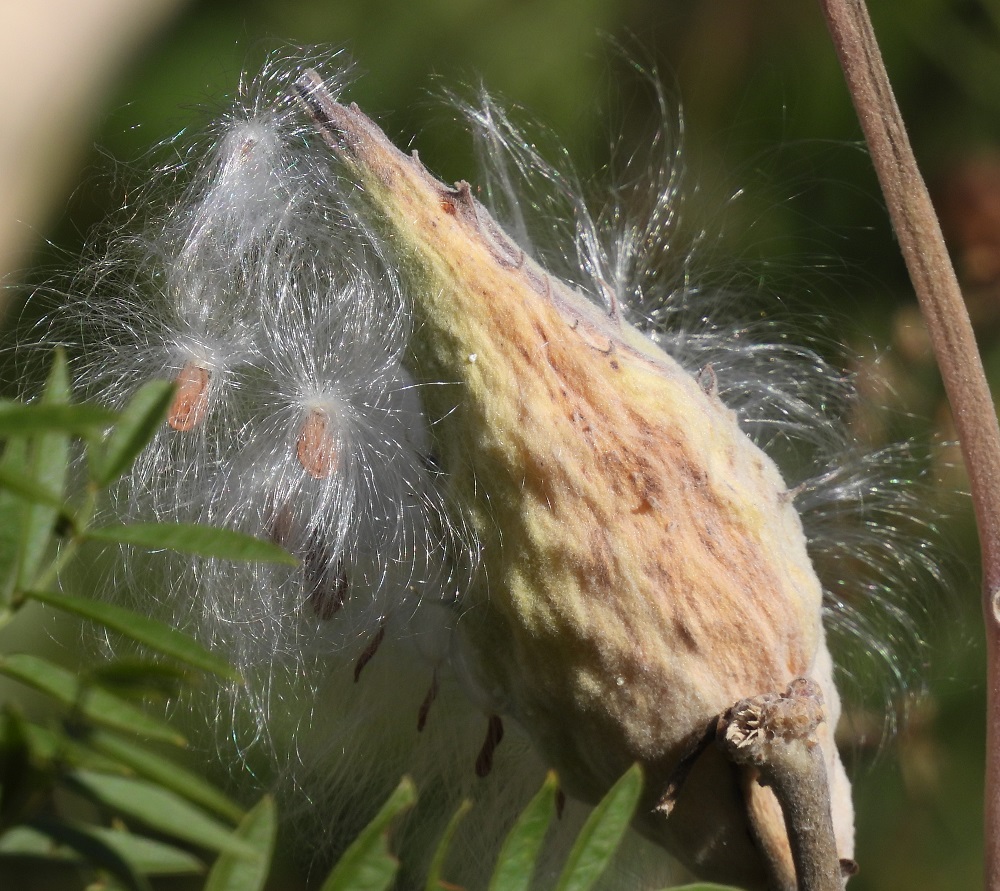
Native or Non-Native?
Showy milkweed is native to this area and is common in sandy, loamy or gravelly soil along roadsides, in fields and ditches, and near streams. It is found over most of the state at elevations from 3,400 to 8,600 feet.
Where to find in Willow Spring Open Space
There is a patch of Showy Milkweed in the dry area just south of the Englewood Dam and also in among the Wild Licorice shrubs.
Did You Know?
Milkweed plants are the host plant for Monarch butterflies, which are large orange and black butterflies that have an annual migration. The butterfly larvae eat the milkweed leaves, retaining the cardiac glycosides, which make the butterflies toxic to predators.
The silky seed fibers are used by goldfinches as soft padding for their nests. They also were spun into yarn by Pueblo Indigenous People to make fabric used by dancers.
References and Further Reading
- Botany in a Day: The Patterns Method of Plant Identification, by Thomas J. Elpel, 1967
- Flora of Colorado, by Jennifer Ackerfield, 2015
- Colorado Native Plant Database Data Portal, Colorado State University
- Colorado Flora Eastern Slope: A Field Guide to the Vascular Plants, 4th Edition, by William A. Weber and Ronald C. Wittmann, 2012
- Wildflowers of the Rocky Mountain Region, Denver Botanic Gardens, 2018


